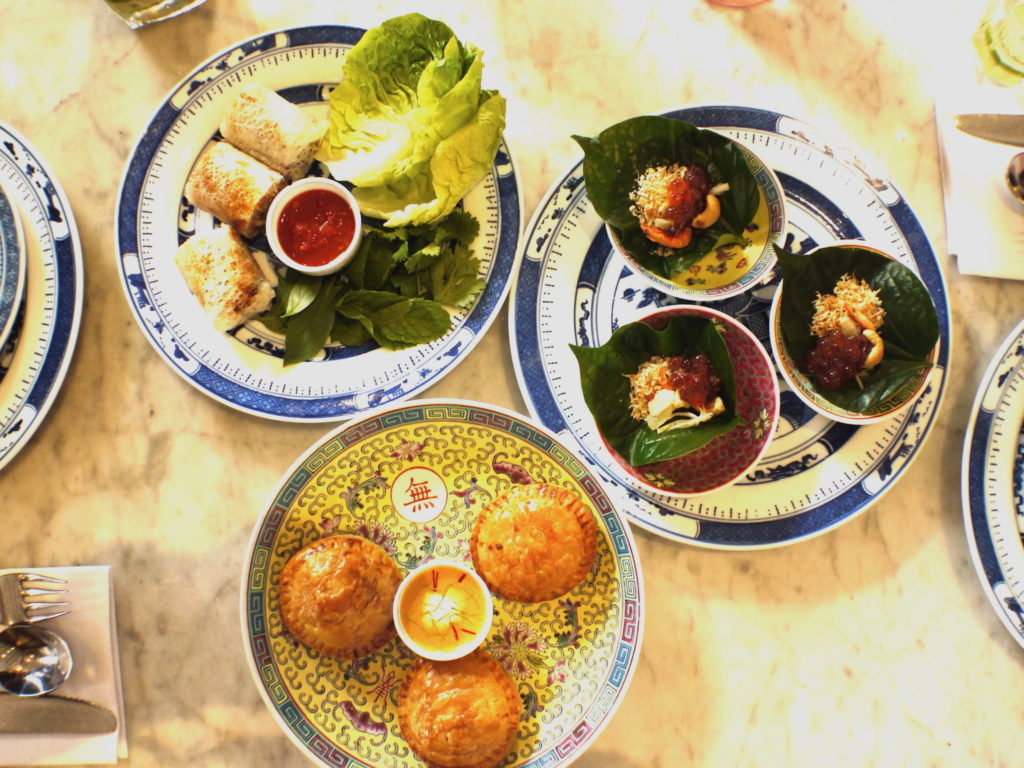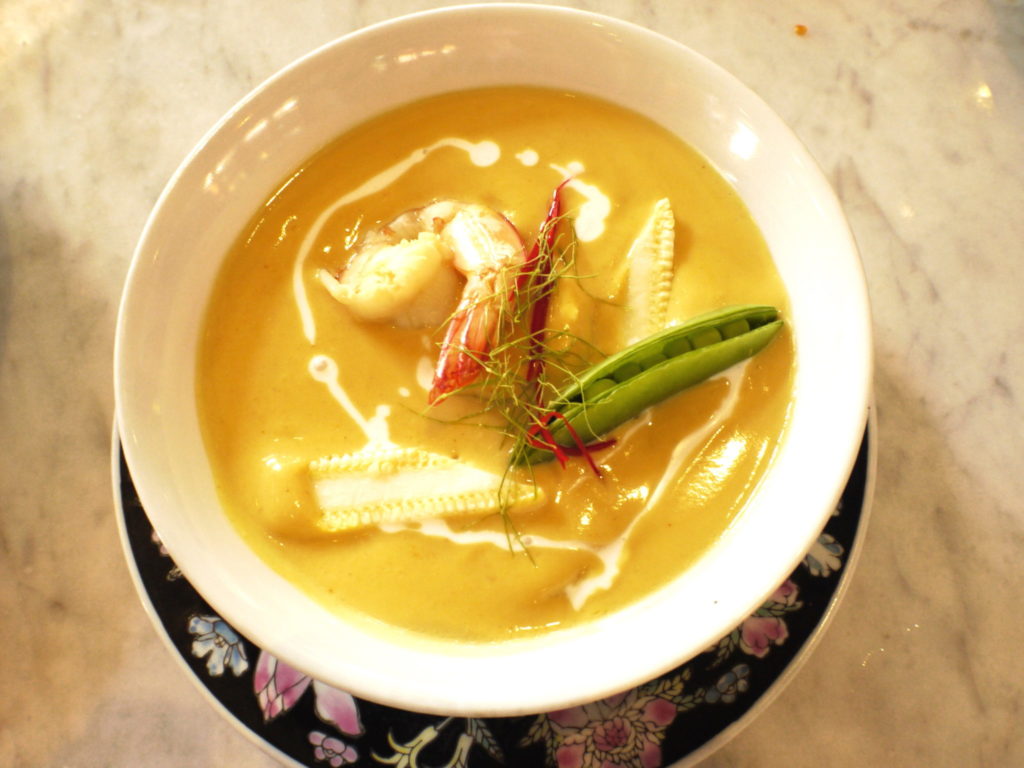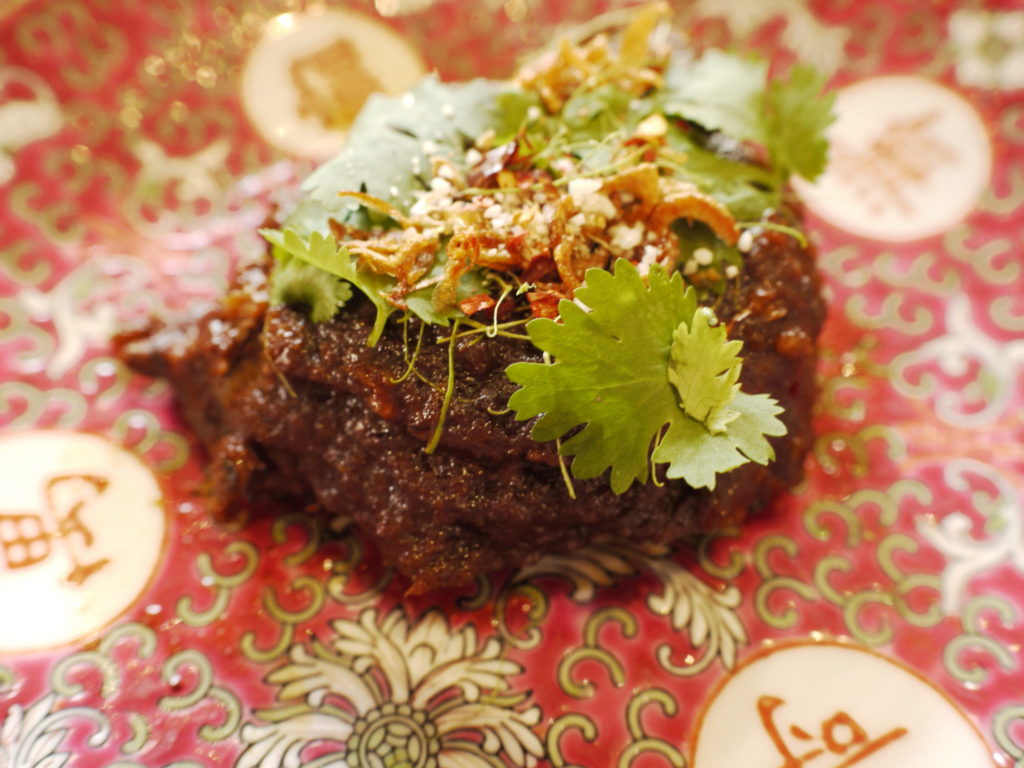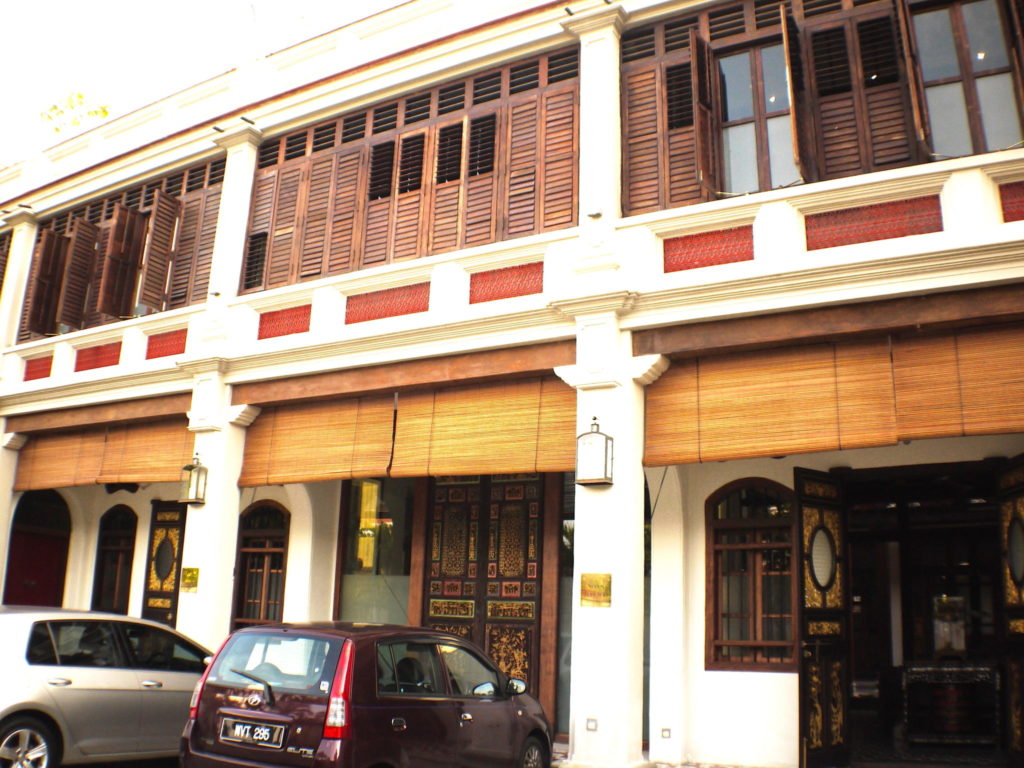
While strolling down Stewart Lane, you come across the façade of the beautifully restored Anglo-Chinese Seven Terrace boutique hotel, located in the heart of the UNESCO World Heritage site. The dining area houses the Kebaya Dining Room, serving some of the best Indochinese and Peranakan fare you can find in Penang, from classics like the wing bean kerabu to the fusion joo hoo char roll, offering an experience which will leave you wanting more.
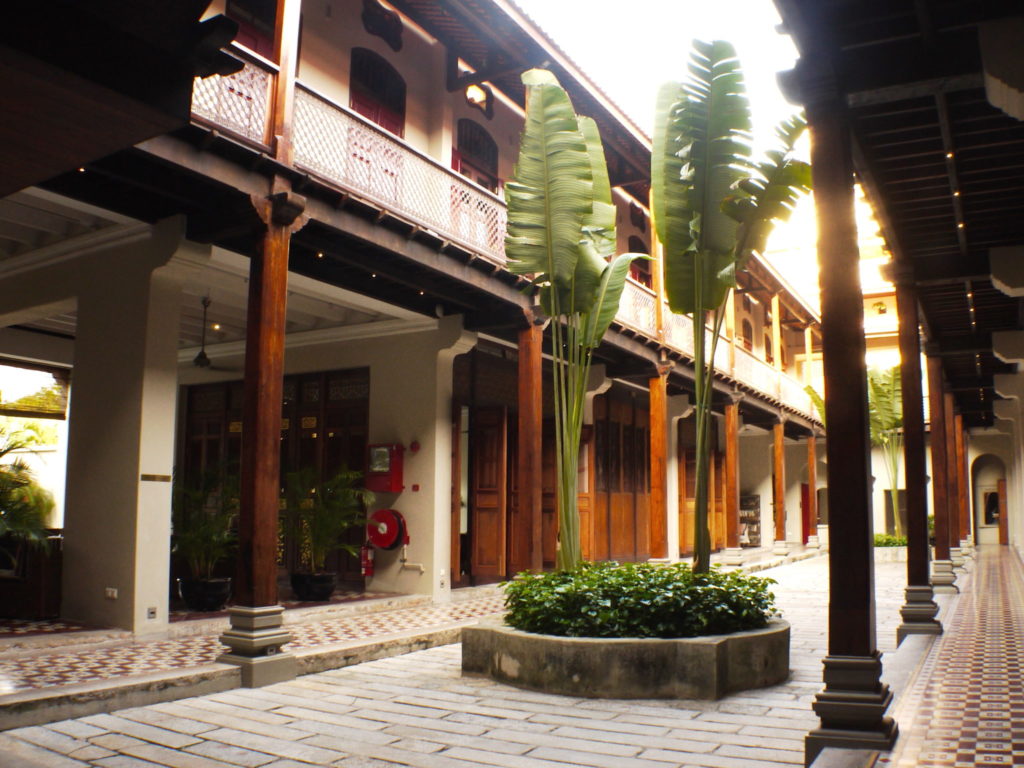
As you enter the building, you are introduced to a classical Anglo-Chinese colonial elegance, from the use of redwood throughout the building to traditional Chinese porcelain antiques used throughout its structure, as well as the use of antique furniture and tiles, you are taken back to the days which birthed the Baba and Nyonya culture of the Straits Settlements.
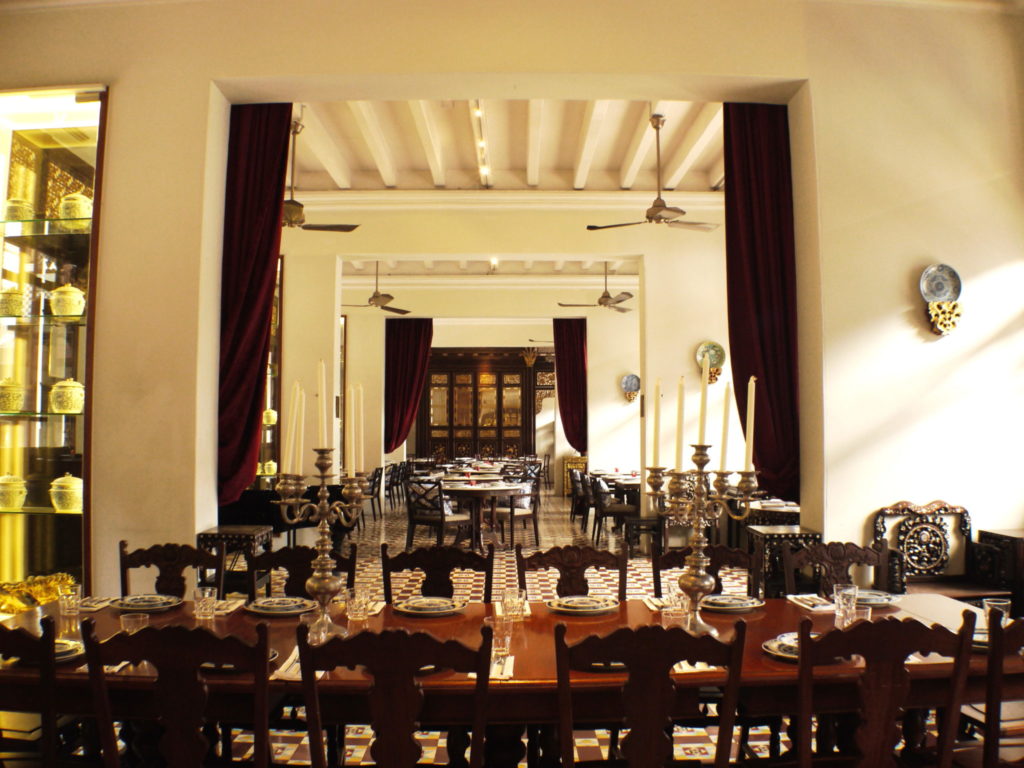
The Seven Terraces is owned by Christopher Ong, heritage-preserving hotelier who has successfully restored and created many other hotels in Penang such as Muntri Mews, Noordin Mews, Clove Hall and Muntri Grove. Seven Terraces showcases some of the most beautiful antique porcelain ware, known locally as kamcheng (盖盅), from the Hokkien dialect meaning “lid and jar”, throughout the hotel, including the dishes used in Kebaya itself.
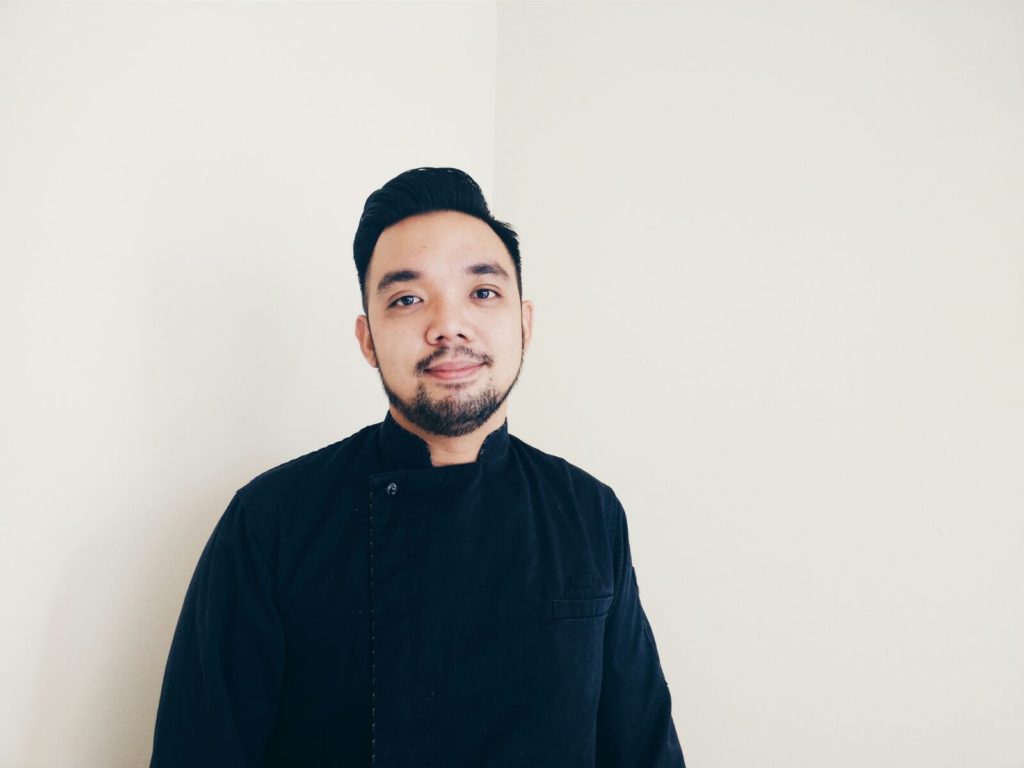
The kitchen is headed by Zachary Choong, the executive chef of Kebaya Restaurant, who has worked many years cultivating his skills in Chicago, Switzerland, the Caribbean, and finally returning to Penang. He applies very innovative cooking methods using traditional Malaysian flavour profiles, Vietnamese lightness, Thai spiciness, and traditional French cooking styles. When asked how he developed this menu, he stated: –
“Having no experience whatsoever in Asian food my boss Christopher Ong guided me into the right direction of Nyonya aunties with a lifetime of Peranakan cooking knowledge. Armed with their secrets, we decided to take it further by going for 2 month long stages at the best Thai restaurant in Asia, Nahm.” – Zachary Choong, Executive Chef of Kebaya Restaurant.
The Dining
The menu is divided into three parts, aptly named To Begin, Protein, Greens and Dessert. The dishes are suggestedly served in a traditional Chinese course of 4, however, add-ons are done very frequently due to the variation of the dishes, and besides, 8 is a lucky number by Chinese standards. When asked what is the philosophy behind the creation of the menu, Choong quipped: –
“Local, organic and sourcing the best produce for my customers to enjoy. It’s all about the love for who you are cooking for.”
To Begin
The appetizer menu consists of light morsels and portions enough for sharing, comprising of dishes from a variation of Indochinese and Peranakan influences.
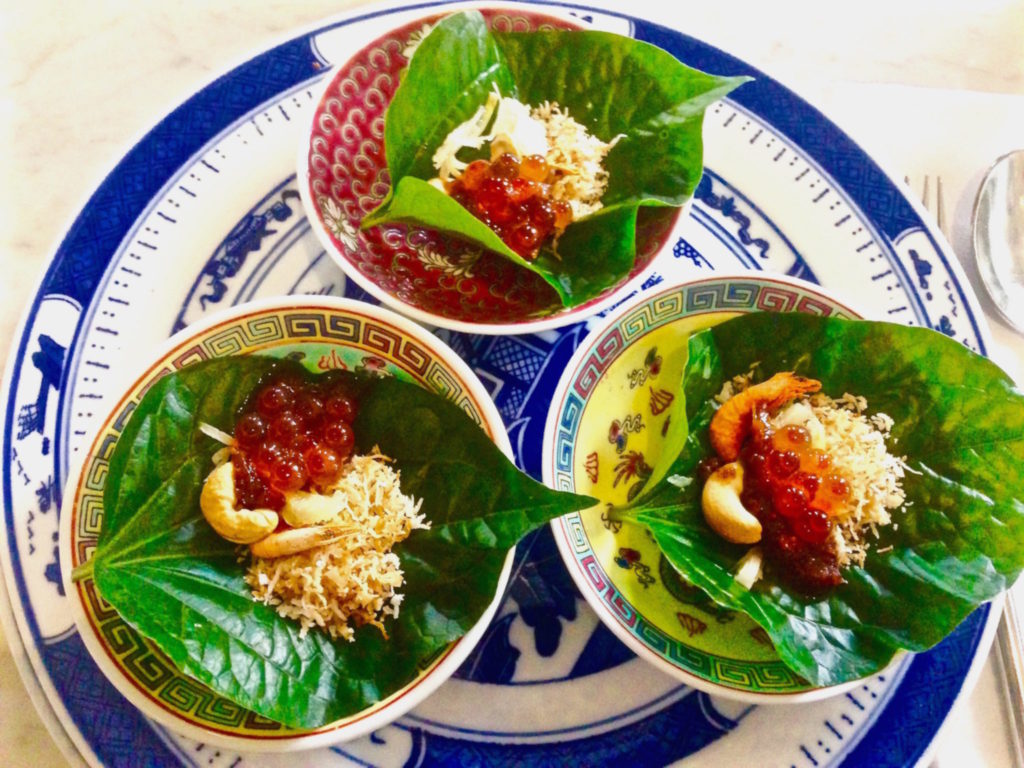
The first dish to be served was the Mang Kham of Salmon Roe, consisting of a large betel nut leaf, toasted coconut shavings, dried shrimp, lime, cashew nuts, pomelo and Norwegian salmon roe. This interesting take on the traditional Thai dish, with a Japanese touch, with a combination of crispy from the prawn, bitter sweet from the pomelo, grainy texture from the coconut and umami flavour from the salmon roe. This dish was visually gorgeous.
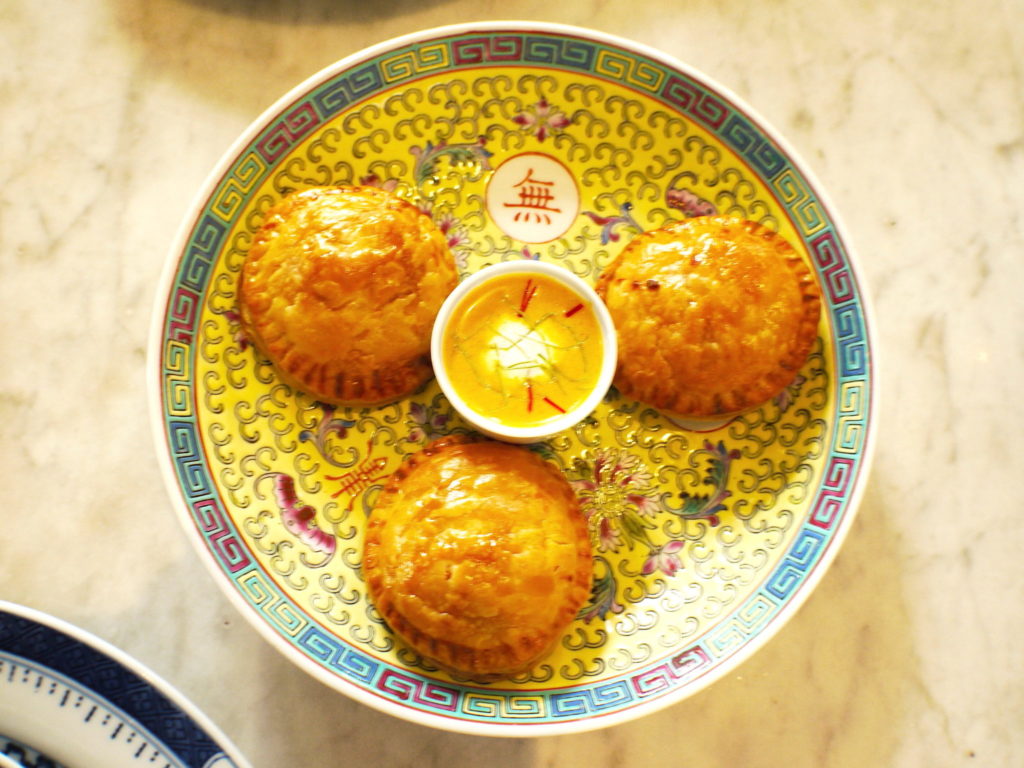
The next appetiser served was a modern take on the Peranakan Otak Otak, a traditionally a fish custard. Here, however, red snapper, garlic and turmeric is baked in a pasty pie, served with a side of otak otak sauce, made from coconut milk, red chilli, lemongrass, galangal and turmeric.
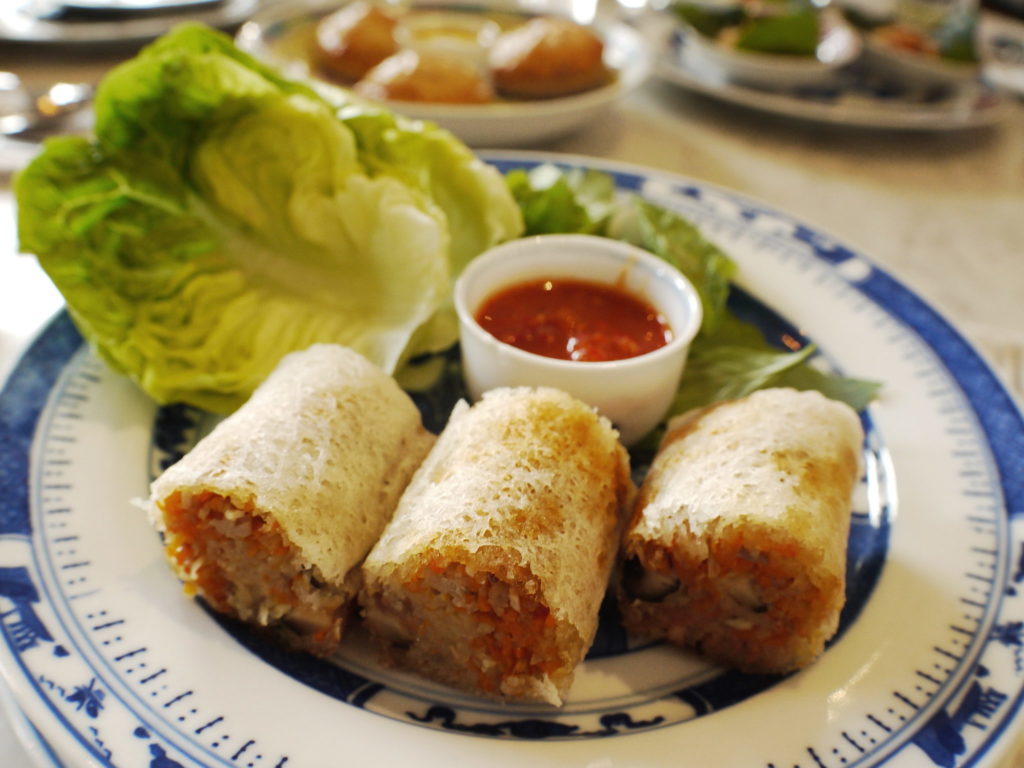
The next appetiser was the tantalising Crispy Joo Hoo Char Roll, a fusion take on the traditional Peranakan joo hoo (魷魚, Hokkien for dried squid), with a Vietnamese rice roll twist. This dish had a burst of intense flavour from the strong umami flavour of the dried squid and shitake mushrooms, and sweetness of the sautéed carrots, jicama and pork, all wrapped in a perfectly crispy latticed rice paper, very highly recommended.
Protein and Greens
The next dishes to be served were the meats and vegetable dishes, the main course by Chinese cuisine standards. These portions are normally a little larger, and are meant for sharing.
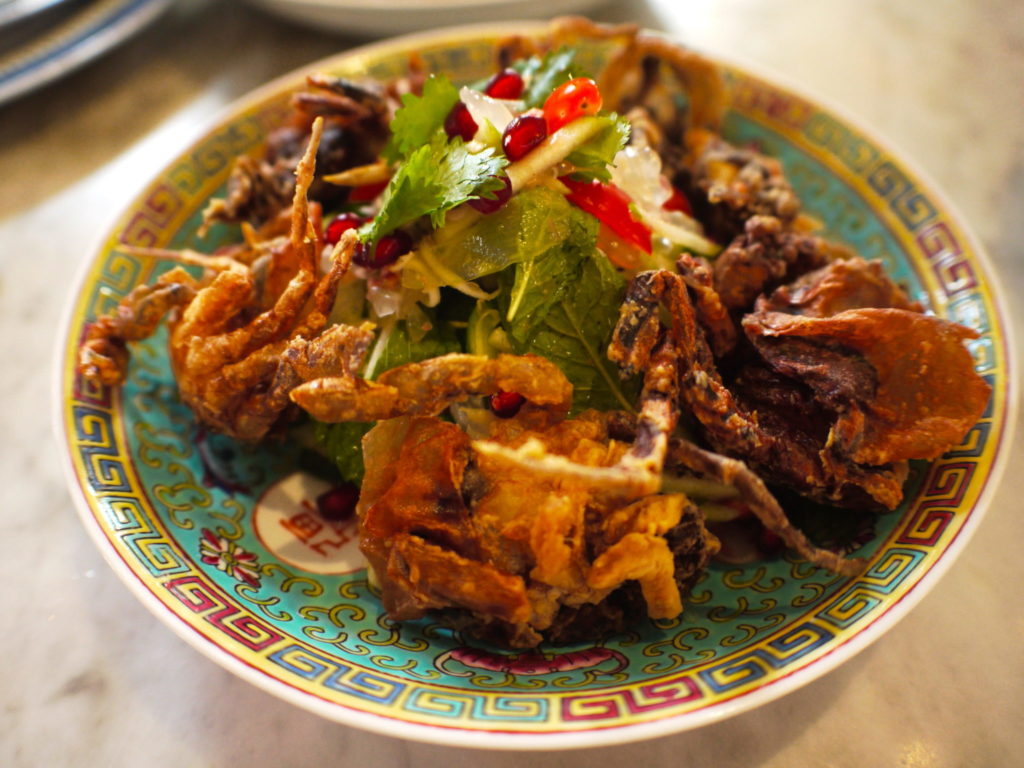
One of the most delicious dish was the Thai Soft Shell Crab Salad, an interesting interpretation of type of sour Thai salad called jam, usually made with a chilli lime and nam pla (fish sauce) dressing. The soft shell crab was crispy, and perfect with the tangy shreds of young mango, green apples, pomegranates and jambu air (rose apple) with sleeves of mint and corriander, another must try.
The curry dish served was the Prawn Geng, a seafood curry made with rich coconut milk, wild caught prawns, and baby corn. The base of this dish is made from turmeric and lemongrass, also known as a Thai yellow curry.
The next, and probably most recommended dish is the Kebaya Beef Tamarind. This dish was a succulent slab of beef shoulder that has been sous vide for 72 hours for extra tenderness. This dish takes the traditional dipping sauce for the miang kham, mainly made from tamarind, lemongrass, galangal, ginger, fish sauce, and gula melaka (palm syrup) is used as the main marinade for the dish. This dish is garnished and topped off with dried bits of rice, fried shallots and coriander for a perfect mix of crunch and sweet savouriness.
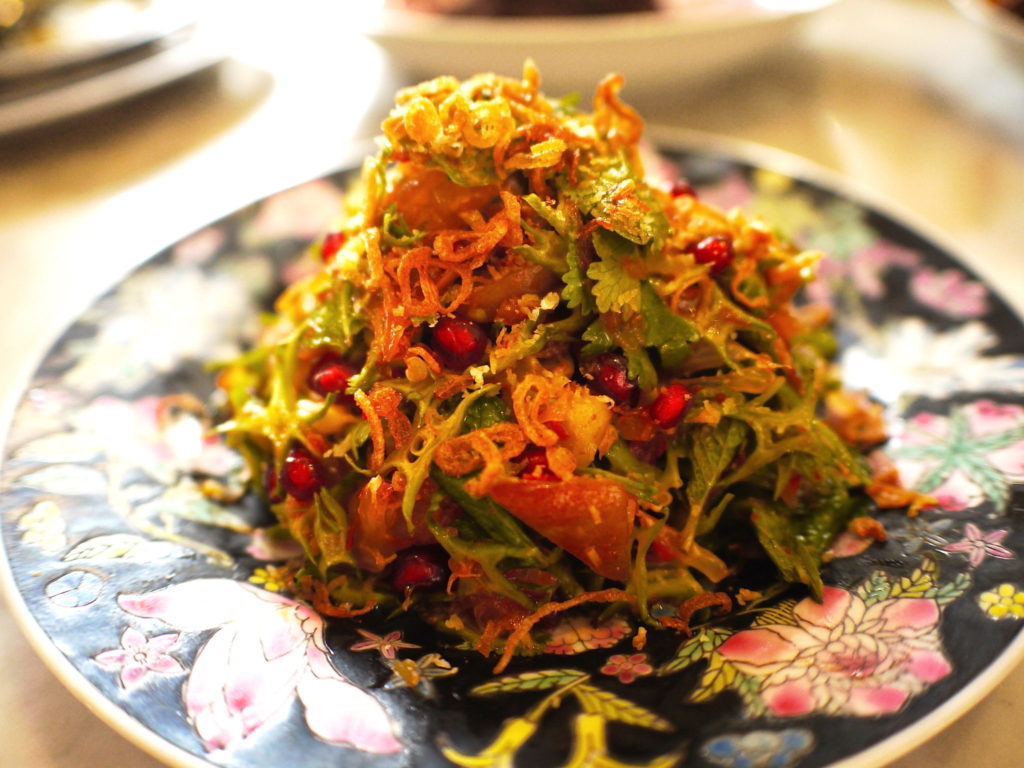
The next dish, one off the Greens menu, was the Wing Bean Kerabu. Wing bean, also known as four-angled bean are sliced thinly to ensure the right bite, mixed with toasted coconut, calamansi, coriander, jambu air, pomegranates, sections of pomelo, mint leaves, fried shallots, and a nice sambal belacan dressing. This dish has quite the kick with the use of bird’s eye chilli, known locally as cili padi.
Dessert
The dessert menu consists of a variety of offerings, all combinations of western desserts with a local twist.
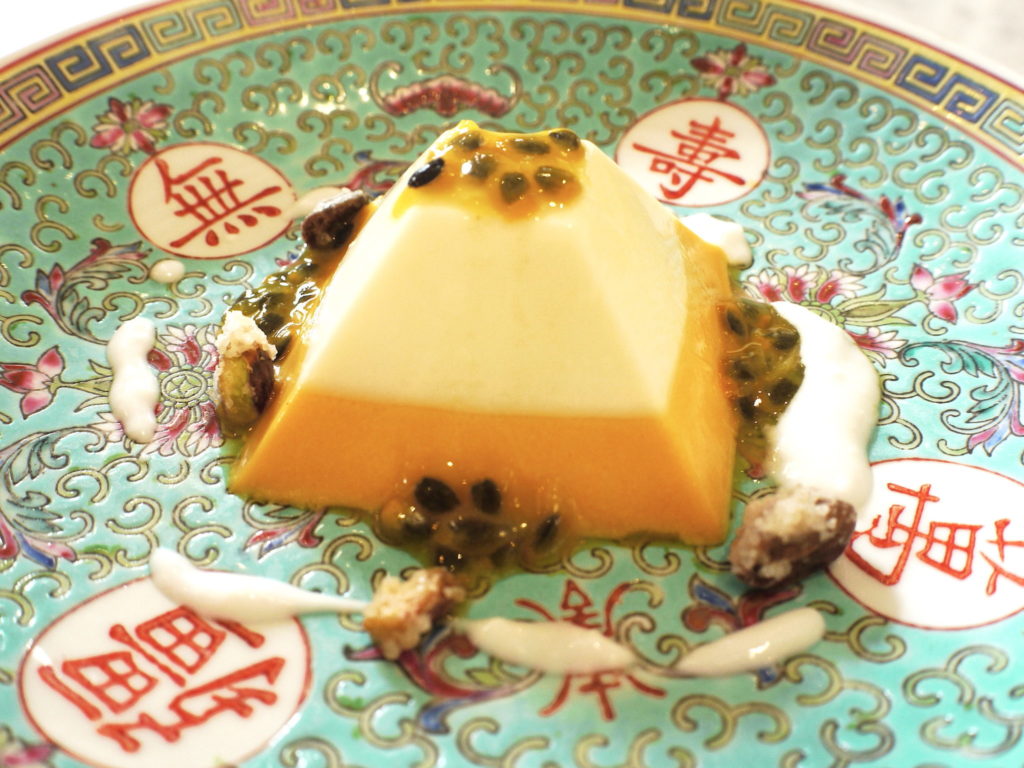
The first dessert was the Pana Cotta, made with a base of Passion fruit and coconut, with sweetened pineapple bits in the centre, and a small serving of candied pistachios on the side. The different textures were quite playful and interactive.
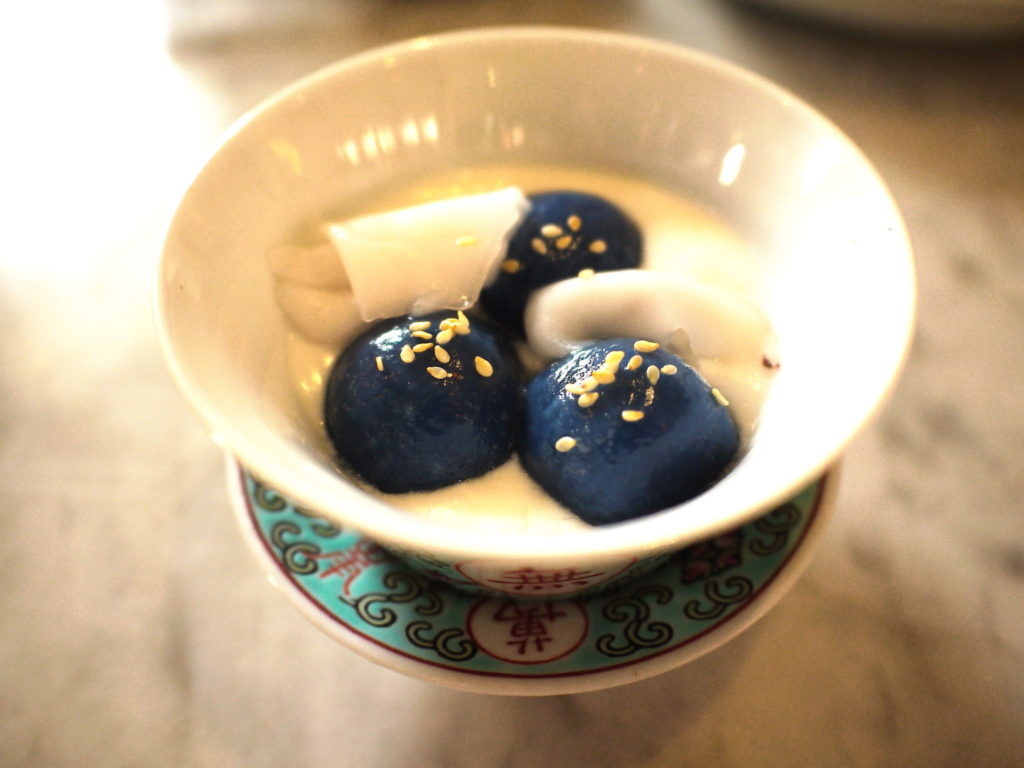
The second dessert, the Tang Yuen is an amazing surprise, from the traditional Chinese dish. Tang Yuen is normally filled with black sesame or peanut, however, at Kebaya, they manage to insert a Malay twist to a very Chinese dish, the onde-onde, a rice cake that is stuffed with desiccated coconut and gula melaka. Dyed blue with bunga telang (Clitoria blossom), a flower commonly used to slightly flavour and dye food blue in Southeast Asian cuisine, the onde-onde is quite the surprise. Served in a coconut broth, this is a dessert you don’t want to miss.
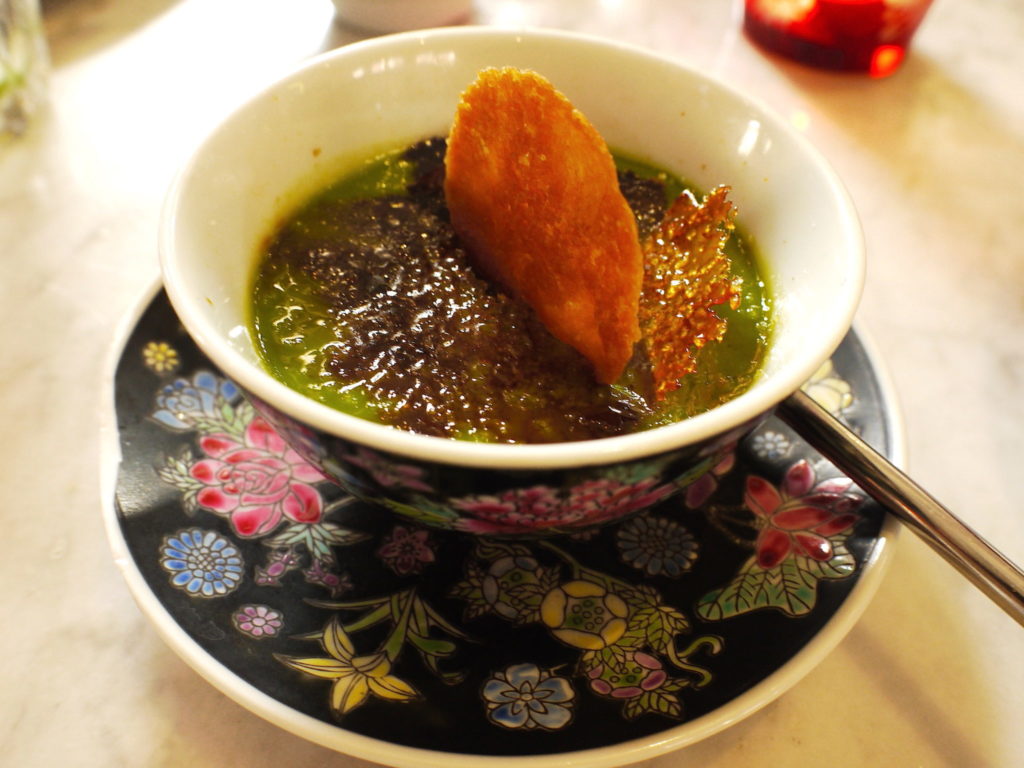
The final dessert was the Pandan Crème Brulee, an Asian take on the traditional French dessert. This dish is flavoured with juices from the pandan leaf, a very light and slightly bitter after note. The sweetness of the crème brulee is only contrasted with the slightly burnt brandy snaps, adding a deeper dimension to the dish.
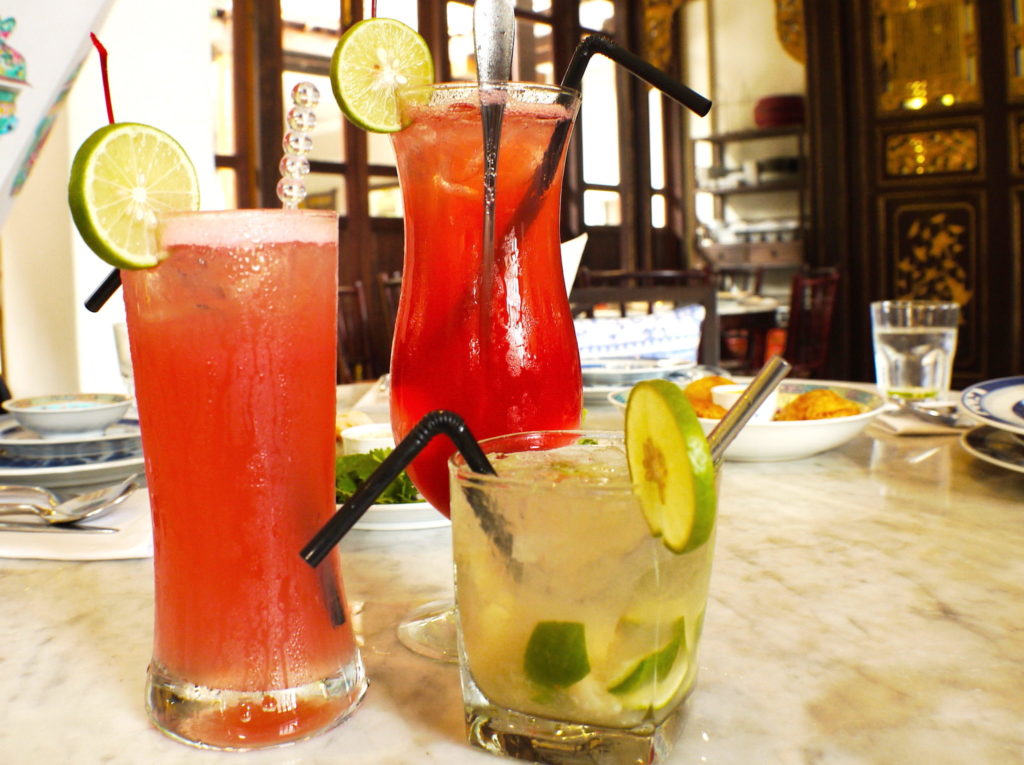
The Bar
A must try for a refreshing taster would be the Georgetown Cooler, a cocktail made with nutmeg juice, lime, grenadine, Bombay Sapphire gin, longan and soda, and the Galle Fort Special, a vodka based cocktail with lime, lychee, passion fruit syrup and brown sugar.
You do see a journey through Indochina with the choice of ingredients and flavours, from Vietnamese, Thai and Malaysian influences. When asked what does Indochinese cuisine mean to you, Choong replied: –
“I hate to use the word but to me it means fusion. Fusion is used so cheaply these days, but I feel Indochinese cuisine was an attempt to make the most out of nothing and in that process a plethora of dishes were born.”
The Kebaya Dining Room Experience
If you are looking for a restaurant with the lofty flavours of Indochinese colonial days, but with the modernity of traditional French cooking, then look no further. A definite must try if you’re looking for an elevated Asian experience.
For a complete travel experience, see our Ultimate Guide: Penang Street Food.
For a choice of heritage hotel, see our review of Seven Terraces Hotel.
Seven Terraces
Stewart Lane,
10200 George Town,
Penang.
+604 264 2333
Opening Hours:
6:00 pm to 10.00 pm
| PHOTOGRAPHY BY: LILA BAKAR | WEBSITE: KEBAYA DINING ROOM |
